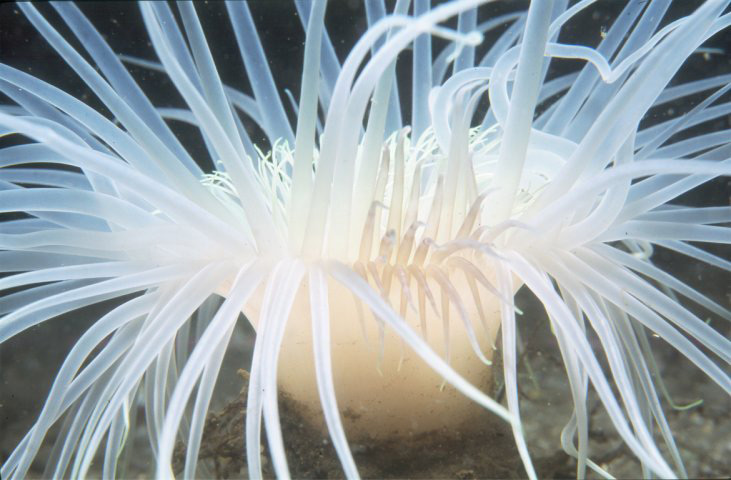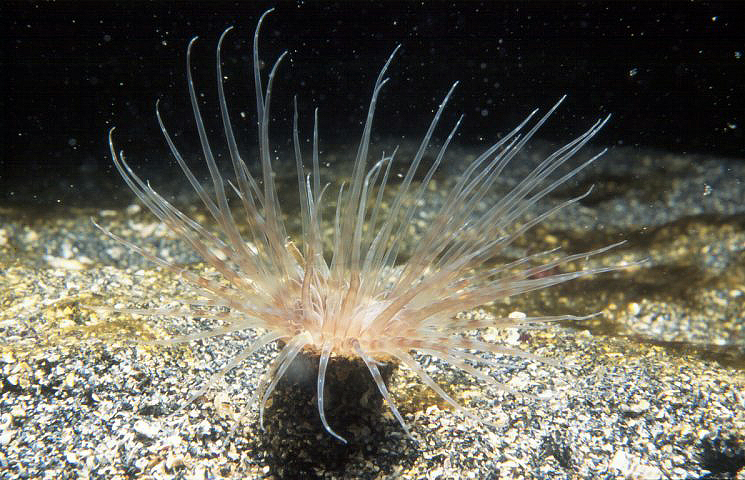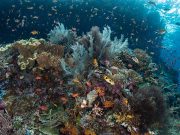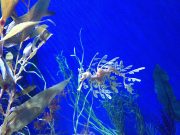The Fireworks Anemone, scientifically known as Pachycerianthus multiplicatus, is a captivating marine species primarily found in the chilly waters of the North Sea and northeastern Atlantic. Known for its striking appearance and large size, this anemone graces the coasts of Britain, Ireland, Denmark, Sweden and Norway. However, in recent years, it has surprised scientists by appearing as an invasive species in the warmer waters of the Turkish Mediterranean, likely transported by ships from the Northeast Atlantic.

A Towering Anemone with a Unique Structure
Unlike typical anemones, the Fireworks Anemone can reach impressive sizes, growing up to 30 cm tall and 30 cm across, making it one of the largest anemones in its habitat. It lives in a burrow it creates in muddy seafloor bottoms, where it can extend and retract into a long tube over a meter in length. This tube offers protection as it anchors the anemone securely, allowing it to withdraw when threatened. Unfortunately, this burrowing habit makes the species vulnerable to human activity, particularly bottom trawling, which can destroy its habitat and harm its population.
Stunning Display of Tentacles
Named for its spectacular appearance, the Fireworks Anemone features two distinctive rows of tentacles that resemble a radiant firework display. The outer row of tentacles is typically white, forming a striking perimeter around the anemone, while the inner, shorter row of tentacles are darker.
A Unique Relationship with Shrimp
One unique aspect of its ecology is its relationship with certain shrimp species. Often, small shrimp are found sheltering beneath the anemone’s tentacles.
Distinctive Reproductive Patterns
Unlike many other anemones that reproduce asexually, the Fireworks Anemone relies solely on sexual reproduction. Males release their gametes first, which triggers nearby females to release eggs. This synchronized spawning enhances the likelihood of fertilization in the open ocean.
Conservation Concerns
As a species native to northern seas, the Fireworks Anemone faces challenges from human activities. Its delicate, mud-burrowing lifestyle makes it particularly susceptible to bottom trawling, a fishing method that disturbs and damages seabeds.
The Fireworks Anemone is more than just an underwater beauty; offering shelter to other species and contributing to the biodiversity of its habitat. As an unexpected newcomer to the Mediterranean, it highlights the impact of human activity on species distribution and emphasises the importance of protecting fragile marine habitats.
The Fireworks Anemone is part of the Cerianthidae family, closely related to the Cerianthus anemones.
 Image: Tim Nicholson
Image: Tim NicholsonPhylum: Cnidaria > Class: Anthozoa > Order: Spirularia > Family: Cerianthidae > Genus: Pachycerianthus
References
L. G. Jonsson et al, Symbiotic associations between anthozoans and crustaceans in a temperate coastal area. Mar Ecol Prog Ser Vol. 209: 189–195, 2001
M. E. Cinar et al, Checklist of Cnidaria and Ctenophora from the coasts of Turkey Turkish Journal of Zoology Vol 38 (2014)
Image credits:
- Cerianthus lloydii – the Burrowing Anemone: Tim Nicholson

















